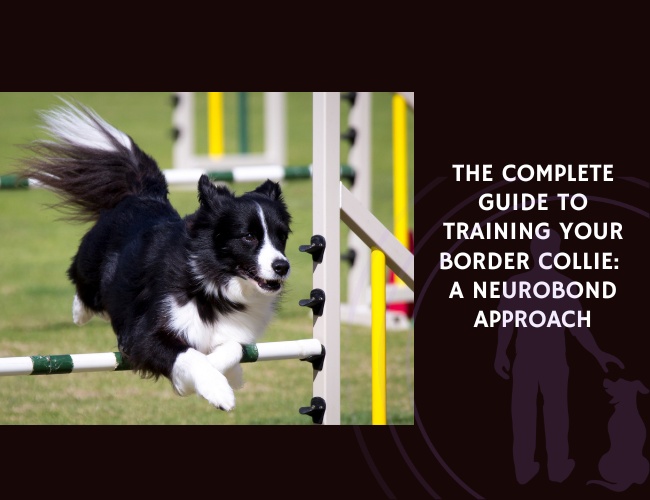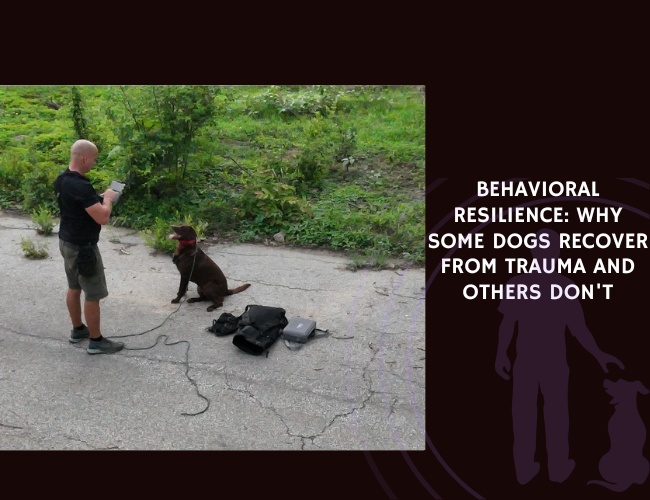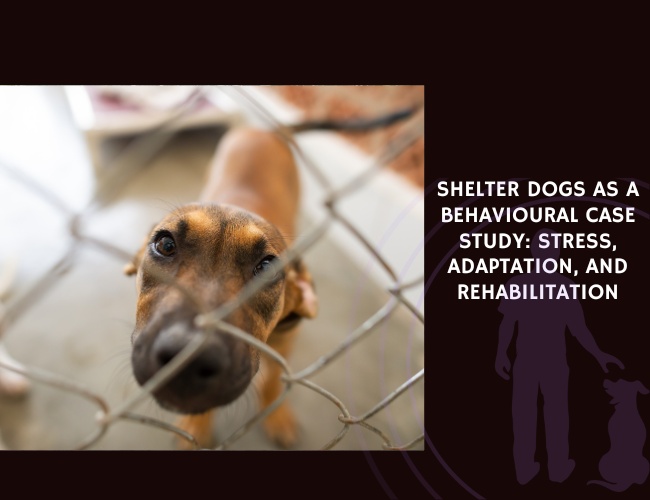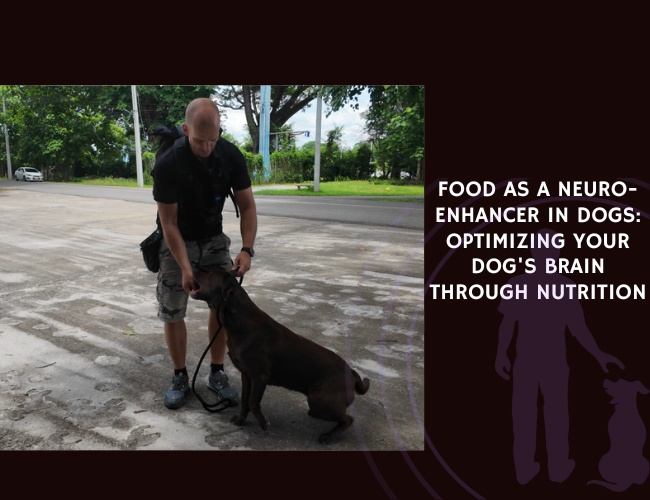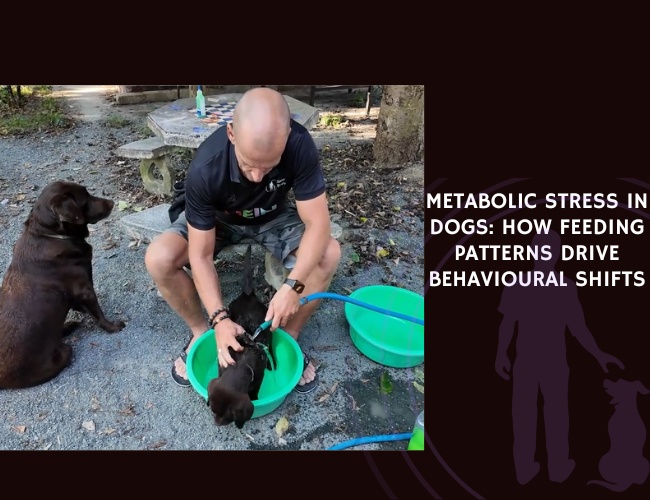Introduction: Understanding Your Brilliant Border Collie
Welcome to a transformative journey with one of the most intelligent and sensitive dog breeds on Earth. If you’ve welcomed a Border Collie into your life, you’ve chosen a partner whose cognitive abilities rival those of a young child, whose emotional depth can mirror your own, and whose work ethic puts most humans to shame. But with this extraordinary intelligence comes unique challenges that traditional training methods often fail to address.
Your Border Collie’s brain is a marvel—research by Stanley Coren consistently ranks them as the most intelligent dog breed, capable of learning new commands in fewer than five repetitions and obeying first commands 95% of the time. Yet this same brilliance that makes them exceptional can also make them challenging partners if approached with conventional obedience training. They’ll find loopholes in your rules, anticipate your patterns, and potentially develop their own “solutions” to problems you didn’t know existed.
This is where the NeuroBond approach becomes not just helpful, but essential. Developed specifically for dogs who think, feel, and problem-solve at advanced levels, this philosophy recognizes that your Border Collie needs more than commands—they need genuine partnership. In this comprehensive guide, we’ll explore how to channel your Border Collie’s extraordinary capabilities through connection rather than control, creating a relationship where their natural instincts become the very pathways to harmonious living together. 🐾
Character & Behavior: The Border Collie Mind
The Cognitive Powerhouse
Your Border Collie possesses what scientists call “exceptional cognitive architecture.” Studies have shown they have a larger prefrontal cortex than most breeds—the brain region responsible for planning, problem-solving, and complex decision-making. This isn’t just academic knowledge; it has profound implications for how you approach training and daily life together.
Language Learning Abilities: The famous Border Collie “Chaser” demonstrated that these dogs can learn over 1,000 object names, showing linguistic capabilities that astound researchers. Your Border Collie might not reach Chaser’s vocabulary, but they’re constantly mapping words to meanings, situations to outcomes, and behaviors to consequences. In the NeuroBond framework, we harness this by creating rich, contextual learning environments where words become part of a larger communication system rather than isolated commands.
Problem-Solving and Innovation: Unlike breeds that wait for human direction, Border Collies actively seek solutions. This means that if you don’t provide constructive outlets for their problem-solving drive, they’ll create their own projects—and you might find your garden redesigned or your furniture rearranged. The NeuroBond approach channels this innovation by presenting appropriate challenges and allowing your Border Collie to discover solutions through guided experience.
Observational Learning Masters: Your Border Collie is watching you even when you think they’re sleeping. They map your routines, predict your behaviors, and adjust their own actions accordingly. This hypervigilance, bred from generations of sheep herding where missing subtle cues could mean losing the flock, means every interaction is a training opportunity. The key is becoming conscious of what you’re unconsciously teaching.
The Sensitive Soul Beneath the Working Exterior
Perhaps the most overlooked aspect of Border Collie temperament is their profound emotional sensitivity. This isn’t weakness—it’s the very quality that allows them to read minute changes in sheep behavior from across a field or detect your mood shift before you’re aware of it yourself.
Emotional Mirroring: Your Border Collie doesn’t just observe your emotions; they absorb and reflect them. Feeling anxious? Your Border Collie’s energy will spike. Frustrated with training? They’ll become reluctant to engage. This sensitivity makes them empathetic companions, but it also means harsh training methods or negative environments can cause them to shut down completely. The NeuroBond philosophy works with this sensitivity, using emotional attunement as a training tool rather than viewing it as an obstacle.
Trust and Recovery: Research shows that Border Collies have exceptional memory for negative experiences. Once you shatter their trust through punishment or harsh methods, earning it back becomes an uphill battle. Some Border Collies never fully recover their openness after trust is broken. This makes the NeuroBond approach’s emphasis on connection and positive guidance not just preferable but essential for this breed.
Age-Related Behavioral Development: Studies on Border Collie personality development reveal that fearful and aggressive behaviors can increase up to 12 months and sometimes continue developing until 1.5-2 years. This extended development period means early intervention through positive methods is crucial. The NeuroBond approach provides the supportive framework needed during these sensitive developmental windows.
The Working Heritage in Modern Life
Understanding your Border Collie’s heritage is key to successful training. For centuries, these dogs were bred to work independently, making split-second decisions about wayward sheep without human input. This creates unique training considerations that the NeuroBond approach addresses directly.
Independence Within Partnership: Unlike many herding breeds that rely heavily on handler guidance, Border Collies were selected for their ability to work with minimal direction. This means your Border Collie has strong opinions about how things should be done. Traditional command-based training often clashes with this independence, creating frustration for both dog and handler. The NeuroBond method respects this autonomy while building voluntary cooperation.
The Herding Instinct Dilemma: That group of children playing in your yard? To your Border Collie, they might look like a scattered flock needing organization. The movement, noise, and unpredictability can trigger deep instincts, potentially leading to nipping or intense staring. Rather than punishing these natural behaviors, NeuroBond training redirects them into appropriate outlets while teaching your Border Collie when herding behavior is and isn’t appropriate.
Vocalization & Communication: Decoding Your Border Collie’s Language
The Complexity of Border Collie Communication
Your Border Collie communicates through a sophisticated system that goes far beyond simple barks and tail wags. As sight and sound-sensitive dogs bred for detecting the slightest changes in their environment, they’ve developed nuanced ways of expressing everything from mild concern to explosive joy.
The Vocal Repertoire: Border Collies aren’t typically excessive barkers, but when they do vocalize, it’s with purpose. You might notice:
- Sharp, single barks for alerts
- Low grumbles during concentration
- High-pitched excitement yips during play
- Soft whines when problem-solving
- “Talking” vocalizations when trying to communicate complex needs
In the NeuroBond framework, we don’t silence these communications but learn to read them as valuable feedback about your dog’s internal state and needs.
The Intense Border Collie Stare: Perhaps no breed is more famous for “the eye”—that intense, focused stare originally used to control sheep movement. In your home, this stare might be directed at you, toys, other pets, or even shadows on the wall. Understanding when the stare indicates working drive versus stress versus request for interaction is crucial for appropriate responses.
Body Language Nuances: Your Border Collie’s body is constantly communicating. The position of their ears can shift from alert (forward) to thinking (slightly back) to worried (pinned) in seconds. Their tail tells stories too—a low, slow wag might indicate uncertainty, while a high, stiff tail could signal arousal or potential reactivity. The NeuroBond approach teaches you to read these subtle shifts and respond appropriately.
Building Bi-Directional Communication
The Check-In Behavior: One of the foundational elements of NeuroBond training with Border Collies is establishing regular “check-ins.” Given their independent nature, teaching your Border Collie to voluntarily seek guidance creates a communication loop that respects their autonomy while maintaining connection. This becomes especially important in stimulating environments where their herding instincts might otherwise take over.
Energy Awareness: Border Collies are extraordinarily sensitive to human energy. Your internal state directly affects their behavior and learning capacity. Approaching training with calm, focused energy yields dramatically different results than approaching with frustration or impatience. The NeuroBond method teaches handlers to become conscious of their energy output, using it as a primary communication tool.
Creating Contextual Understanding: Because Border Collies excel at pattern recognition, they quickly learn that different contexts call for different behaviors. The way you position your body, the environment you’re in, and even the time of day all become communication cues. By consciously structuring these contexts, you create clear communication without relying on repetitive commands.
Training & Education: The NeuroBond Method for Border Collie Brilliance
Embracing the Thinking Dog
Training a Border Collie requires a fundamental shift in approach from traditional methods. You’re not programming a robot; you’re engaging with a thinking, feeling, problem-solving partner who will quickly outsmart rigid rule systems. The NeuroBond philosophy embraces this intelligence rather than trying to suppress it.
The Myth of “Easy to Train”: Despite their reputation, many Border Collie owners discover that their dogs aren’t as “easy to train” as expected—especially when using conventional treat-based methods. Their intelligence means they quickly identify patterns and loopholes. They might perform perfectly when treats are visible but develop selective hearing when rewards aren’t obvious. Some Border Collies even learn to manipulate the training game itself, offering behaviors only when it suits their purposes.
Working With the Independent Thinker: Your Border Collie’s heritage of working with minimal human direction means they’re comfortable making their own decisions. This can manifest as what looks like stubbornness but is actually your dog saying, “I’ve assessed the situation and have a different solution.” The NeuroBond approach honors this intelligence by creating scenarios where your dog’s solution aligns with your goals.
Beyond Mechanical Commands: Traditional obedience often fails with Border Collies because it doesn’t engage their full cognitive capacity. They need to understand the “why” behind behaviors, not just the “what.” In NeuroBond training, we create meaningful contexts where behaviors make sense to the dog, transforming mechanical responses into thoughtful choices.
Practical Application for the Border Collie Mind
The Standing on the Leash Technique: This classic NeuroBond exercise works brilliantly with Border Collies. When they pull, you simply stand on the leash (leaving enough slack for comfort but not for pulling). Your Border Collie’s problem-solving brain kicks in: “I want to move forward, but I can’t. What are my options?” Most quickly discover that sitting or lying down releases tension, and forward movement resumes. They’ve solved the puzzle themselves, making the lesson far more memorable than any correction.
Channeling the Herding Drive: Rather than suppressing herding instincts, we redirect them. This might involve:
- Teaching your Border Collie to “herd” toys into a basket
- Using movement games where they learn to guide you through obstacles
- Creating controlled scenarios where herding behavior is rewarded in appropriate contexts
Mental Challenges Over Repetition: While some breeds thrive on repetition, Border Collies often become bored and start adding their own variations. The NeuroBond approach keeps training fresh by constantly presenting new puzzles within familiar frameworks. Today’s recall might involve finding you hidden behind a tree; tomorrow’s might include navigating obstacles to reach you.
Age-Specific Considerations for Border Collies
Early Puppyhood (8-16 weeks): Border Collie puppies show remarkable learning capacity even at young ages. However, their sensitivity means harsh experiences during this period can have lasting effects. NeuroBond socialization focuses on:
- Positive exposure to various stimuli while maintaining emotional safety
- Beginning pattern recognition games that will later support training
- Building confidence through supported exploration
- Early herding instinct management through appropriate toys and games
The Adolescent Challenge (6-24 months): Research shows Border Collie personality traits, especially fearfulness and reactivity, can increase up to 2 years of age. This extended adolescence requires patience and consistency. During this phase:
- Previously learned behaviors might temporarily disappear
- Herding instincts intensify, potentially leading to problematic behaviors
- Sensitivity to environment increases, requiring careful management
- The need for mental stimulation peaks
The NeuroBond approach provides stability through this turbulent period by maintaining connection even when behaviors fluctuate.
Adult Learning Excellence: Adult Border Collies who missed early training aren’t lost causes. Their cognitive abilities mean they can rapidly acquire new skills when approached correctly. The key is building trust first, especially if they’ve experienced harsh training methods previously. Adult Border Collies often show more focused learning ability than puppies, capable of grasping complex concepts quickly once they trust their handler.
Senior Cognitive Maintenance: Studies show that lifelong training helps maintain cognitive function in aging dogs. Border Collies who engage in regular mental stimulation show better attention and problem-solving abilities into their senior years. The NeuroBond approach adapts to physical limitations while keeping the mind active through:
- Scent work that doesn’t require intense physical activity
- Modified herding games using lightweight objects
- Problem-solving puzzles adjusted for any vision or hearing changes

Performance & Activities: Channeling Border Collie Drive
Understanding the Performance Mindset
Your Border Collie doesn’t just want to work—they need to work. This isn’t about keeping busy; it’s about fulfilling deep genetic programming that says “I must have a purpose.” Without appropriate outlets, this drive turns inward, potentially creating obsessive behaviors, anxiety, or destructive patterns. The NeuroBond approach channels this need into constructive activities that strengthen your bond.
The One-Hour Myth: Young Border Collies need at least one hour of aerobic exercise daily, but this is just the physical minimum. Mental exercise is equally crucial—some say 15 minutes of intense mental work equals an hour of physical exercise for this breed. The NeuroBond philosophy integrates both, creating activities that engage body and mind simultaneously.
Quality Over Quantity: A Border Collie who runs for two hours but never engages their problem-solving abilities remains unsatisfied. Conversely, a shorter session involving complex tasks, decision-making, and collaborative work with you leaves them contentedly exhausted. The key is finding activities that make them think while they move.
The Danger of Over-Stimulation: Border Collies can become adrenaline junkies, always seeking the next high-intensity activity. This creates dogs who can’t settle, always anticipating the next exciting thing. The NeuroBond approach balances high-drive activities with calm connection work, teaching your Border Collie that relaxation is equally valuable.
Constructive Outlets for Natural Abilities
Herding Without Sheep: Urban and suburban Border Collies need creative outlets for their herding instincts. NeuroBond-inspired activities include:
- Treibball (urban herding with exercise balls)
- Precision fetch games with specific placement requirements
- “Clean up” games where they learn to put toys in specific locations
- Movement puzzles where they guide family members through courses
The Learning Curve: Research shows that trained Border Collies perform significantly better than untrained ones, even in unrelated tasks. This transfer of learning means every positive training experience enhances overall capability. However, the same research found that dogs with basic obedience performed nearly as well as those with specialized training, supporting the NeuroBond emphasis on broad relationship-building over narrow skill development.
Creating Flow States: Border Collies can enter what psychologists call “flow states”—periods of intense focus where they’re fully absorbed in tasks. These states are deeply satisfying and psychologically healthy. NeuroBond training creates opportunities for flow through:
- Progressively challenging scent work
- Complex retrieval sequences
- Problem-solving tasks that build in difficulty
- Collaborative activities requiring sustained attention
The Invisible Leash in Action
Off-Leash Reliability Through Connection: The ultimate expression of NeuroBond training is the Border Collie who maintains perfect recall and proximity not through drilled commands but through genuine desire to work with you. This invisible leash develops through:
- Thousands of micro-moments of connection
- Consistent reinforcement of check-in behaviors
- Creating scenarios where staying close leads to exciting opportunities
- Building trust that you’ll provide appropriate outlets for their drives
Environmental Confidence: A Border Collie trained through NeuroBond methods shows remarkable environmental stability. Whether in a busy park, around livestock, or in new situations, they look to you for information rather than making independent (potentially problematic) decisions. This doesn’t diminish their intelligence—it channels it through the partnership you’ve built.
Nutritional Recommendations: Fueling the High-Performance Mind
The Border Collie Metabolism
Your Border Collie’s nutritional needs reflect their high-energy, high-intelligence lifestyle. Like elite athletes, they require carefully balanced nutrition to support both physical performance and cognitive function. The NeuroBond approach extends to feeding, recognizing that how we provide food is another form of communication and bonding.
Energy Requirements: Active Border Collies burn calories at impressive rates. However, the “active” designation varies widely—a competition agility dog has different needs than a household companion who enjoys daily walks and training sessions. Rather than following generic feeding guides, observe your dog’s body condition, energy levels, and mental acuity to adjust portions appropriately.
Brain Food: Your Border Collie’s exceptional cognitive abilities require nutritional support. Key nutrients include:
- Omega-3 fatty acids (especially DHA) for cognitive function
- Antioxidants to protect against mental aging
- B-vitamins for neurotransmitter production
- Quality proteins providing amino acids for brain chemistry
The Weight Management Challenge: Border Collies can be prone to weight gain if their high-energy needs decrease (due to injury, age, or lifestyle changes) but feeding remains constant. Excess weight impacts not just physical health but cognitive function and emotional well-being. The NeuroBond approach addresses this through mindful feeding practices that adapt to your dog’s changing needs.
Feeding as Training Opportunity
Mealtime Brain Games: Every meal can become a training session that reinforces your bond while providing mental stimulation. Consider:
- Puzzle feeders that require problem-solving
- Scatter feeding to engage natural foraging instincts
- Training exercises using portion of meals as rewards
- “Find it” games where meals are hidden around the house
The Communication of Routine: Regular meal times create predictable structure that Border Collies appreciate. However, the NeuroBond philosophy maintains flexibility—sometimes life intervenes, and meals are delayed. A dog secure in your relationship trusts that food will come without anxiety, building resilience and adaptability.
Food and Focus: Some Border Collies become so food-motivated they can’t think clearly when treats appear. Others show little interest in food rewards, preferring play or praise. The NeuroBond approach recognizes these individual differences, using whatever motivates your specific dog while ensuring nutritional needs are met.
Brilliant. Sensitive. Driven.
Your Border Collie is always thinking.
Every moment is a calculation, a prediction, a solution in progress. NeuroBond doesn’t suppress this brilliance—it guides it toward connection, purpose, and calm focus.
Emotion is not a hurdle—it’s the path.
Their legendary intelligence is matched only by their sensitivity. Harshness backfires. But when you train through empathy, trust becomes the driving force behind every behavior.

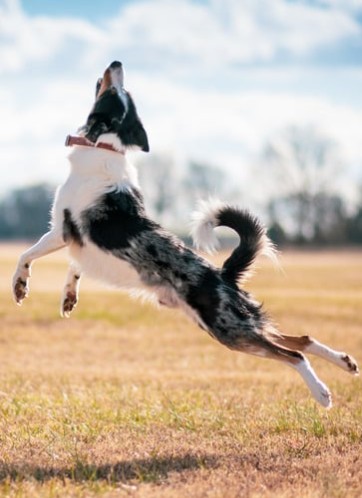
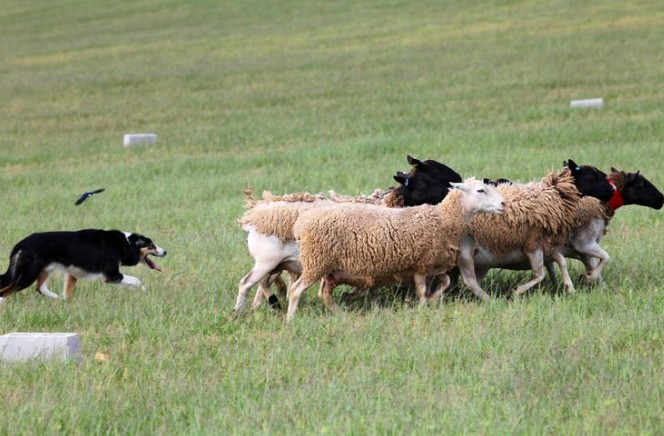
Work is not optional—it’s identity.
Your Border Collie needs more than commands or play—they need meaningful tasks. NeuroBond transforms training into partnership, herding into purpose, and energy into joy.
Health Concerns: Supporting Your Sensitive Athlete
The Mind-Body Connection in Border Collies
Border Collies’ high sensitivity extends to their physical health. They often hide discomfort until it becomes severe—a trait that served them well when showing weakness might mean losing their working position. This stoicism requires vigilant observation from their human partners.
Stress-Related Health Issues: The same sensitivity that makes Border Collies excellent working partners can predispose them to stress-related health problems. Chronic stress might manifest as:
- Digestive issues (often the first sign of anxiety)
- Skin problems or excessive licking
- Compromised immune function
- Behavioral changes that seem unrelated to health
The NeuroBond approach inherently reduces stress by eliminating punishment-based training, creating predictable environments, and building confidence through connection.
Common Border Collie Health Concerns: While generally healthy, Border Collies can be prone to:
- Hip dysplasia (affecting training and activity choices)
- Epilepsy (requiring modified training approaches)
- Collie Eye Anomaly (impacting visual-based training)
- Exercise-induced collapse (necessitating careful activity management)
Understanding these potential issues helps you adapt training and activities appropriately while maintaining your dog’s quality of life.
The Exercise Balance: Border Collies need substantial exercise, but over-exercise in young dogs can damage developing joints. The “five minutes per month of age” rule provides a starting point for puppies, but individual observation matters more than rigid formulas. Watch for signs of fatigue, limping, or reluctance to continue activities.
Preventive Care Through Connection
Early Detection Through Bonding: The deep connection developed through NeuroBond training helps you notice subtle changes that might indicate health issues. You’ll recognize when your normally eager Border Collie hesitates before jumping, or when their problem-solving seems slightly off. This early detection can make significant differences in treatment outcomes.
Veterinary Partnership: Your vet is part of your NeuroBond team. Regular check-ups ensure physical health supports training goals. A vet who understands your training philosophy can provide guidance that aligns with your connection-based approach, avoiding recommendations that might undermine the trust you’ve built.
Mental Health Considerations: Border Collies can experience anxiety, compulsive behaviors, and even depression. The NeuroBond approach addresses mental health proactively through:
- Predictable routines that provide security
- Appropriate outlets for natural behaviors
- Strong human-dog bond providing emotional support
- Recognition and respect for individual sensitivities

Lifestyle & Environment: Creating the Ideal Border Collie Life
Environmental Enrichment for the Thinking Dog
Your Border Collie’s environment profoundly impacts their behavior, learning, and overall well-being. Creating spaces that support their unique needs while maintaining household harmony requires thoughtful planning and ongoing adjustment.
The Observation Post: Border Collies often choose elevated positions where they can survey their territory. Providing appropriate vantage points—a dog bed by a window, a raised platform in the yard—satisfies this instinct while preventing problematic behaviors like furniture climbing. These observation posts become part of their environmental management routine.
Managing Sensory Sensitivity: Being sight and sound sensitive means your Border Collie notices everything—the neighbor’s cat, distant car doors, subtle light changes. Rather than trying to eliminate stimuli, the NeuroBond approach teaches appropriate responses:
- Acknowledgment without overreaction
- Check-in behaviors when noticing something interesting
- Calm assessment rather than immediate action
Safe Spaces and Brave Spaces: Every Border Collie needs retreat options—places where they can decompress without demands. This might be a crate with the door open, a quiet corner with their bed, or a specific room where they’re never asked to perform. Balanced with “brave spaces” where learning and challenges occur, this creates psychological safety that supports optimal development.
The Working Dog in a Companion World
Purposeful Living: Border Collies thrive with daily “jobs,” even in pet homes. These don’t need to be complex—carrying a backpack on walks, bringing in the newspaper, or being responsible for toy cleanup can fulfill their need for purpose. The NeuroBond approach recognizes that a Border Collie with a job is a happy Border Collie.
Family Integration Challenges: In family settings, Border Collies may struggle with:
- Children’s unpredictable movements triggering herding instincts
- Multiple handlers giving conflicting signals
- Varying energy levels throughout the day
- Different family members having different rules
The NeuroBond solution involves creating family-wide consistency in core principles while allowing for individual interaction styles. Everyone doesn’t need to do everything identically, but respect, connection, and positive guidance should remain constant.
The Urban Border Collie: City-dwelling Border Collies face unique challenges—constant stimulation, limited space, and fewer traditional outlets for their instincts. Successful urban Border Collie life requires:
- Creative use of available spaces
- Strong impulse control training
- Extra emphasis on mental stimulation
- Regular escapes to more natural environments
- Careful socialization to city-specific stimuli
Lifestyle Rhythms and Routines
The Daily Dance: Border Collies quickly learn and anticipate daily patterns. The NeuroBond approach uses this to advantage, creating rhythms that naturally guide behavior:
- Morning connection rituals setting calm tone
- Activity periods balanced with rest
- Training woven throughout daily activities
- Evening wind-down routines promoting relaxation
Seasonal Adjustments: Your Border Collie’s needs change with seasons—higher energy in cool weather, potential lethargy in heat, different exercise requirements as daylight hours shift. The NeuroBond philosophy emphasizes staying attuned to these changes, adjusting routines while maintaining core connection principles.
Social Needs and Boundaries: While bred for working relationships with humans, Border Collies vary in their social needs with other dogs. Some are highly social, others prefer human company exclusively. The NeuroBond approach respects individual preferences while ensuring appropriate social skills through controlled, positive experiences.
Senior Care: Honoring Your Border Collie’s Golden Years
The Evolving Partnership
As your Border Collie ages, the relationship you’ve built through NeuroBond training becomes even more precious. The dog who once learned new commands in five repetitions might need gentle reminders, but the emotional connection you’ve fostered remains strong—often deepening with shared years.
Cognitive Changes and Adaptations: Research shows senior Border Collies experience decreased attention and slower stimulus orientation compared to younger dogs. However, those with high lifelong training scores maintain better cognitive function. This validates the NeuroBond emphasis on continuous, gentle mental stimulation throughout life. Your senior Border Collie benefits from:
- Simplified versions of familiar games
- Shorter but more frequent training sessions
- Novel experiences at a manageable pace
- Patience with slower processing times
Physical Adjustments Without Abandoning Activity: Arthritis, vision changes, or decreased stamina don’t mean your Border Collie stops needing purpose. The NeuroBond approach adapts activities rather than eliminating them:
- Herding lightweight objects instead of heavy balls
- Scent work replacing high-impact agility
- “Helper” tasks adapted to physical capabilities
- Swimming or water work for joint-friendly exercise
The Wisdom of Age: Senior Border Collies often show remarkable emotional intelligence, reading situations with nuance that younger dogs miss. This wisdom can be channeled into new roles—perhaps mentoring younger dogs, providing calm presence during training sessions, or becoming therapy dog partners where their sensitivity serves others.
Quality of Life Through Connection
Reading the Subtle Signals: Your years of NeuroBond communication training become invaluable as your Border Collie’s signals become quieter. The intense stare might soften to a gentle gaze, the athletic leap might become a careful step, but you’ve learned to read these subtle changes. This deep understanding guides decisions about activity levels, medical interventions, and quality of life.
Maintaining Mental Stimulation: Studies demonstrate that lifelong training, including clicker work and problem-solving, helps prevent cognitive decline in aging dogs. For senior Border Collies, mental exercise might include:
- Food puzzles adjusted for any vision limitations
- Gentle training games that build on decades of learning
- New tricks that work within physical constraints
- Social interactions that engage without overwhelming
The Comfort of Routine: While younger Border Collies benefit from variety, seniors often find comfort in predictable routines. The NeuroBond philosophy balances this need for predictability with gentle challenges that keep the mind engaged. Your senior dog knows what to expect while still experiencing moments of discovery and achievement.
The Final Chapter
Preparing for Goodbye: The profound connection built through NeuroBond training helps both you and your Border Collie navigate end-of-life transitions. Their trust in you extends to trusting your decisions about their care. When the time comes to say goodbye, the bond you’ve built provides:
- Clear communication about their comfort and quality of life
- Mutual understanding that transcends words
- Peace in knowing you’ve honored their needs throughout life
- Strength to make difficult decisions from love rather than fear
Legacy of Learning: Every Border Collie teaches us something unique. The lessons learned through your NeuroBond journey—patience, observation, genuine connection, respect for intelligence—carry forward into all your relationships. Your Border Collie’s legacy lives on in how you approach life with greater awareness and compassion.
Conclusion: Is the NeuroBond Approach Right for Your Border Collie?
As we conclude this comprehensive guide, you might be wondering if the NeuroBond approach aligns with your goals for your brilliant Border Collie. Let’s explore what success looks like and help you make an informed decision about your training journey together.
Recognizing Success with Your Border Collie
Success with a Border Collie extends far beyond basic obedience. Through the NeuroBond approach, success looks like:
Intellectual Fulfillment: Your Border Collie approaches each day with enthusiasm, knowing their considerable mental abilities will be engaged and appreciated. They’re neither bored nor overwhelmed but exist in that sweet spot of appropriate challenge.
Emotional Balance: Despite their sensitivity, your Border Collie shows resilience in the face of daily life. They recover quickly from startling events, approach new situations with confident curiosity, and maintain emotional equilibrium even in stimulating environments.
Channeled Instincts: Those powerful herding drives find appropriate outlets. Your Border Collie no longer feels compelled to organize the neighborhood children or chase every moving object. Instead, they engage in activities that satisfy these instincts while strengthening your bond.
Voluntary Partnership: Perhaps most importantly, your Border Collie chooses to work with you—not from fear or mere food motivation, but from genuine desire to collaborate. This voluntary partnership creates reliability that surpasses any trained obedience.
Critical Questions for Border Collie Owners
Before committing to the NeuroBond journey with your Border Collie, consider these essential questions:
Can you match their intellectual needs? Border Collies require mental stimulation like flowers need sunlight. The NeuroBond approach demands creativity and commitment to providing ongoing cognitive challenges. Are you ready to be constantly thinking of new ways to engage that brilliant mind?
Will you respect their sensitivity? Your Border Collie’s emotional depth means they’ll mirror your moods and remember negative experiences vividly. Can you maintain the patience and emotional regulation necessary to be their steady, trustworthy guide?
Are you prepared for true partnership? Border Collies weren’t bred to be obedient robots but thinking partners. The NeuroBond approach requires you to respect their intelligence and sometimes defer to their judgment. Can you handle a dog who might have better ideas than you do?
Do you have the time for relationship building? While Border Collies can learn commands quickly, building the deep connection that NeuroBond training requires takes time—not just in dedicated training sessions but woven throughout every interaction. Is your lifestyle compatible with this investment?
Your Border Collie Journey Begins
If you’ve read this far and feel excited rather than overwhelmed, the NeuroBond approach might be perfect for you and your Border Collie. Here’s how to begin:
Start with Observation: Spend a week simply watching your Border Collie. Notice their communication attempts, their natural rhythms, their unique quirks. This baseline understanding will inform everything that follows.
Build Foundation Connections: Begin with simple proximity games. Make being near you more rewarding than any distraction. For Border Collies, this might mean engaging their mind—perhaps through puzzle toys or training games—while they’re close to you.
Channel the Drive: Identify your Border Collie’s strongest drives—herding, retrieving, problem-solving—and create appropriate outlets. Start simple and gradually increase complexity as your connection strengthens.
Embrace the Sensitivity: Work on your own emotional regulation. Your Border Collie will be your mirror, reflecting your internal state. Calm, confident energy from you creates a calm, confident dog.
Connect with Understanding: Find a community of Border Collie enthusiasts who understand both the challenges and joys of living with these exceptional dogs. Share experiences, troubleshoot challenges, and celebrate the unique journey you’re on.
A Personal Message for Your Journey
Living with a Border Collie through the NeuroBond approach isn’t always easy, but it’s always rewarding. These dogs will challenge you to become more aware, more patient, more creative than you thought possible. They’ll frustrate you with their independence, amaze you with their intelligence, and touch your heart with their sensitivity.
Remember, your Border Collie doesn’t need you to be a perfect trainer. They need you to be a trustworthy partner who sees their brilliance, respects their nature, and guides them with patience and love. They need someone who understands that their intensity isn’t a flaw to be corrected but a gift to be channeled.
The journey ahead will transform both of you. Your Border Collie will learn to trust your guidance while maintaining their incredible problem-solving abilities. You’ll learn to communicate in ways you never imagined, to see the world through their intelligent eyes, and to appreciate the profound gift of true partnership with one of nature’s most remarkable canines.
Every moment you invest in building this connection—every patient redirection of herding behavior, every creative solution to their mental needs, every quiet moment of understanding—strengthens a bond that will carry you both through whatever life brings.
Welcome to the extraordinary world of NeuroBond training with your Border Collie. Your adventure in conscious, connected partnership starts now. 🧡

